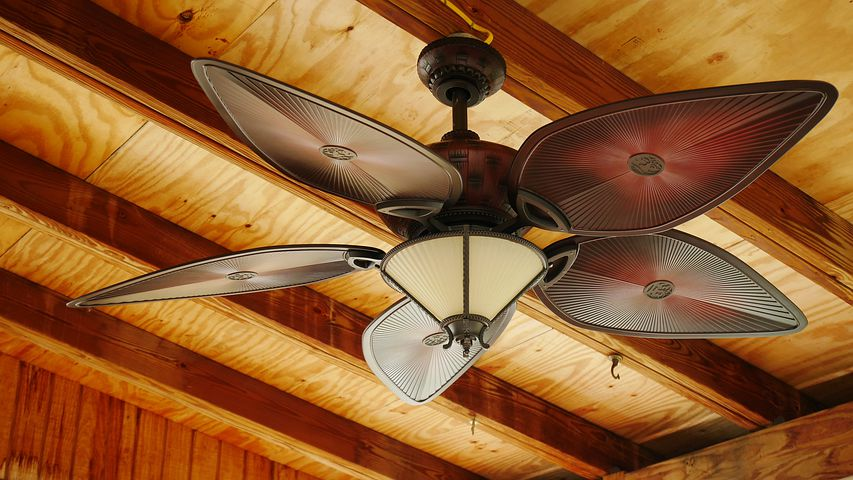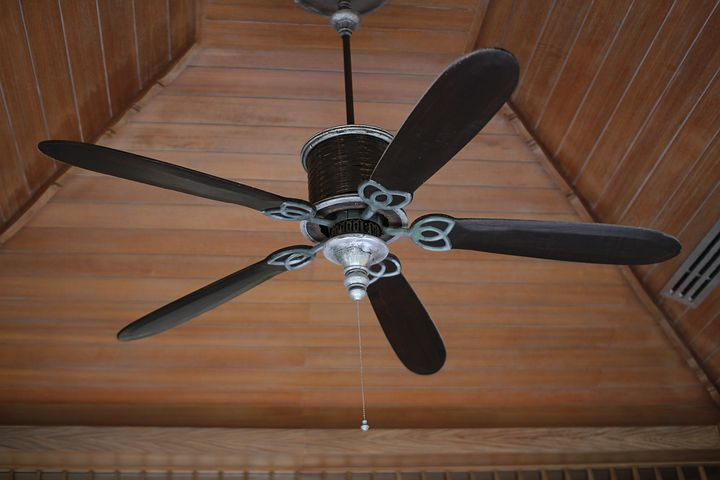Are you in the market to upgrade an ancient ceiling fan? Maybe you want to replace some of the light fixtures in your home with fixtures that can keep you cool and shed light? It’s time you bought a new ceiling fan – or a few new ceiling fans. And if you’re going ceiling fan shopping, you need to know what to look for.
There are so many different ceiling fans on the market, after all – and they have so many more features these days. The most important part of choosing a new ceiling fan is making sure it will fit in the room where you plan to install it. After that, it’s mostly a matter of preference regarding things like the power of the motor, the features the fan has, and the design you choose. Here are some of the things you should be looking for in a new ceiling fan.
The Right Blade Span
Your fan’s blade span will determine whether it’s too small, too big, or just right for the space it’s in. In order to get the blade span right, you’ll need to know the square footage of the room where you’ll hang the fan. Measure the length and width of the with a tape measure, and multiply those numbers together to get the square footage of the room.
Fans are sized in inches, and the sizes are measured across the sweep of the fan blades. The sweep is the circle created by the fan blades when they’re in motion. You want a fan with a sweep of no more than 36 inches for a room under 75 square feet. You want a fan with a sweep of no more than 42 inches for rooms 76 to 144 square feet. You want a fan with a sweep of 44 to 50 inches for a room 145 to 224 square feet. You need a fan with a sweep of 50 inches for a room 226-400 square feet. You need a fan with a sweep of at least 62 inches (if not larger) for a room larger than 400 square feet.
A Powerful Motor
It’s worth it to spend the extra money to buy a ceiling fan with a quiet, powerful motor. DC motors are the latest in ceiling fan technology. They’re quieter than AC motors, they last longer, and they’re more powerful, delivering a higher cubic feet per minute (CFM) rating. The CFM rating measures how many cubic feet of air a fan can move per minute, and you want a CFM rating of at least 4,000, but preferably 6,000 or above.
DC motors also bring more functionality to the table than AC motors. They stop, start, and change speeds more quickly than AC motors. You might get more speed options with a DC motor, as well.
The Features You Need
Ceiling fans today have so many more features than the low, medium, and high speeds and the light fixture with one setting. If it’s been a while since you bought a ceiling fan, take the time to really absorb all of your options. 
You have the traditional fan features – lights, multiple speeds, and a reverse motor switch. But these days, fans can do so much more. For example, you can buy a ceiling fan with dimmable LED lights and smart connectivity so you can connect to the fan and give it orders using your phone. You can even control your smart fan using a voice-controlled smart home device. You can buy fans with remote controls or with wireless wall controls, or wireless wall control boxes that double as remotes. You can buy programmable ceiling fans that will operate according to a schedule.
An Appealing Design
With so many different fan designs on the market, you won’t have trouble finding one that you like – you might just have problems picking your favorite. Fan designers have really branched out, producing industrial fans and tropical fans, traditional fans, ultra-modern fans, cage fans, fans with nine blades, and fans with vertical blades. No matter what kind of decor you have at home, you’ll be sure to find a fan that will fit in.
Shopping for a ceiling fan can be a lot of fun, but it’s easy to get overwhelmed by all the choices you have. Sit down and figure out what features and functionality you need in a fan before you go shopping, so you can easily find the best new fixture for your home.

